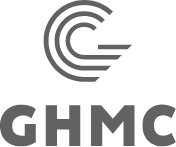Patient Engagement
Turning Experience into Value: Europe’s Opportunity to Lead on Patient-Focused Medicines Development

The European Medicines Agency’s (EMA) Patient Experience Data (PED) reflection paper published last week signals a shift in expectations for how PED should shape medicines development and regulatory decisions in Europe. As the FDA re-orders its priorities under the oversight of Secretary of Health and Human Services, Robert F Kennedy Jr., this timely publication positions the EMA to potentially assume leadership in patient-focused medicines development.
EMA defines PED as data that directly reflects patient or caregiver experience—without input or interpretation by clinicians, third parties, or AI-based devices. PED encompasses health and functional status, symptoms, disease course, treatment preferences, quality of life, factors affecting adherence, outcomes, and side effects, as long as they are directly reported. PED is collected via quantitative (surveys, Patient Reported Outcomes), qualitative (interviews, focus groups), or mixed approaches, provided methodologies are robust and validated.
Historically, the FDA set the pace with practical, detailed guidance and templates, giving companies clarity on what’s required. Yet it’s still unclear how much PED influences regulatory decisions. The EMA’s reflection paper, now under public consultation, contends PED should be systematically considered throughout the entire medicines’ lifecycle. It goes further, emphasizing qualitative data and active patient group engagement to enhance relevance and inclusivity. If consistently applied, this approach could make PED central to regulatory assessment, health technology appraisal, and clinical practice.
The benefits of EMA taking on this leadership role are substantial for European research and healthcare: earlier and deeper patient involvement, improved trial and endpoint design, and sharper value propositions throughout development. In a climate where US-centric investment frequently dominates, a stronger European patient-focused approach could elevate the region as a clinical research destination—especially for studies requiring robust patient input and outcomes.
To truly lead, EMA must advance beyond encouragement. What’s needed now is clear, practical guidance. Just as importantly, stakeholders—including patients and advocacy groups—must see how PED gets assessed and weighed in regulatory and reimbursement decisions. This remains ambiguous on both sides of the Atlantic. Examples, feedback mechanisms, and honest dialogue about PED’s actual impact are vital for trust and progress.
If priorities of the FDA and EMA begin to diverge, global leadership and connectivity, combined with local understanding of how to navigate access hurdles in both regions will become more critical than ever.
At Spectrum Science, our team of Patient Advocacy and Engagement experts sit alongside our clinical, commercial and communications colleagues, working harmoniously to ensure the critical information we gather from patients is actionable and pulled through at each stage of a product lifecycle. While many companies can gather patient data, few are as well positioned as Spectrum to be able to transform the insights gathered into lasting value for both patients and pharmaceutical companies. Contact us today to learn more.
Perspectives

Patient Engagement
A New Way of Thinking About Patient Activation

Patient Engagement
A new way of thinking about patient activation

Patient Engagement
Roche: SMA My Way

Patient Engagement
Moving beyond vanilla to improve patient diversity in clinical trials





